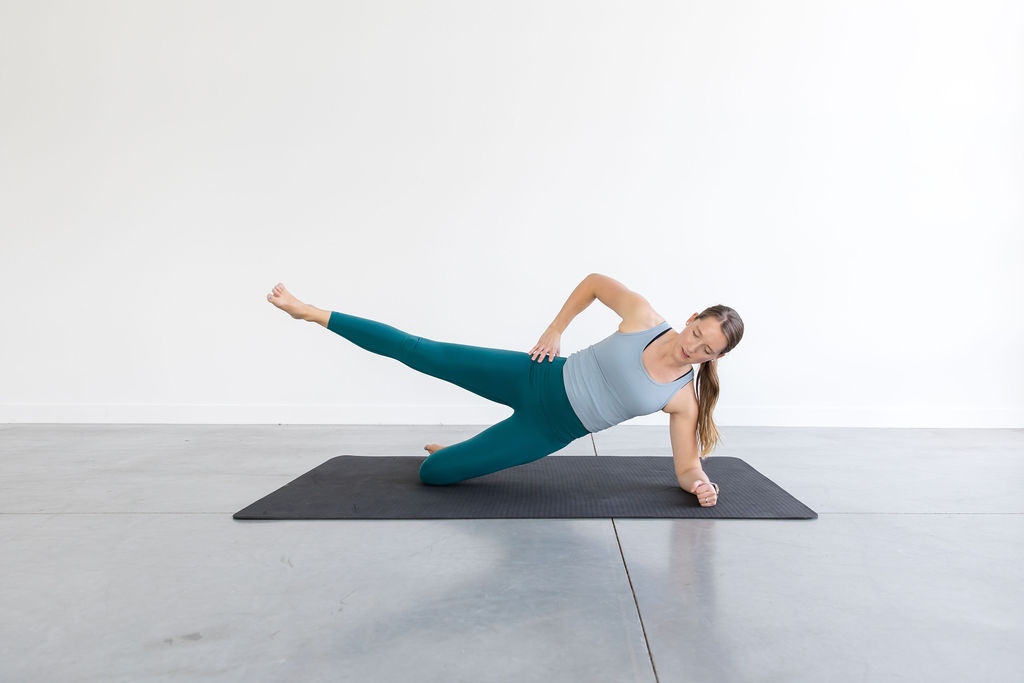Browse around
topics
Hey Girl!
Mother, Wife, Physical Therapist, Lover of Travel
I'm Emily
I'm here to help you build intentional, lasting strength as the foundation for an active, symptom-free life—not just now, but for years to come. Read my story
When Can You Start Exercising After Baby? A Guide for New Moms
Postpartum
Exploring Mexico With Young Children
Travel
Pelvic Floor 101: Understanding It's Role in Postpartum Recovery
Postpartum
Home Gym Essentials
Pregnancy, Postpartum
Why Breathing Matters More Than You Think
I used to completely ignore my breathing during exercise. It felt unnecessary, and honestly, I didn’t want to think about it. I’ve done some yoga in the past, but coordinating breath with movement was one of the things I didn’t enjoy about it!
Now that I understand how breathing impacts my core and pelvic floor, especially postpartum, I make it a priority. And I want you to feel confident doing the same.
By the end of this post, you’ll understand different breathing strategies and how they can help you regain core strength and stability postpartum.
The Connection Between Breathing, Your Core, and Your Pelvic Floor
Your breath, core, and pelvic floor are deeply connected. Think of your core like a canister:
- Top: Diaphragm
- Bottom: Pelvic floor muscles
- Front: Abdominal muscles
- Back: Spinal muscles
When you inhale, your diaphragm and pelvic floor naturally descend and relax. As you exhale, they contract and lift. This movement helps stabilize your trunk and manage abdominal pressure.
Breathing intentionally during exercise, especially postpartum, supports core and pelvic floor function. It also helps rebuild the brain-body connection with your pelvic floor. Since your pelvic floor naturally engages when you exhale, you can use this to your advantage.
One key mistake to avoid? Holding your breath during exercise. It might feel easier because it provides temporary stability by trapping air in your lungs. However, this can create too much pressure on your abdomen and pelvic floor, leading to issues like diastasis recti or prolapse over time.
Breathing Strategies for Exercise
1. The Basics: Matching Breath to Movement
- Inhale during the easiest part of the movement.
- Exhale during the hardest part to engage core stability.
- Example: When squatting, inhale on the way down and exhale as you push up.
- Think: “Blow as you go!” Exhale through effort to support your core.
2. Exhale Through the Entire Motion
- This technique provides extra stability for your core and pelvic floor.
- It’s especially useful in early postpartum recovery when strength is still rebuilding.
- Example: Instead of just exhaling at the top of a squat, try exhaling continuously as you lower and rise.
3. The Valsalva Maneuver: When & When NOT to Use It
- The Valsalva maneuver involves breath-holding during the hardest part of a lift to create max core tension.
- Not recommended postpartum until your core and pelvic floor regain strength.
- Should only be used when lifting 80%+ of a 1-rep max and with proper form.
- Alternative: A controlled exhale with core engagement for safer lifting.
Do I Have to Think About Breathing Forever?
No! Intentional breathing is crucial postpartum, but over time, it should become second nature.
The goal is to build awareness and strengthen the connection between your breath, core, and pelvic floor. As your strength improves, you won’t need to focus on it as much.
However, if you’re experiencing symptoms like leaking, heaviness, or core instability, revisiting your breathing technique can help. When an exercise feels difficult, check in with your breath, it might make all the difference!
Key Takeaways & Next Steps
Breathing isn’t just about taking in oxygen, it plays a critical role in core stability and pelvic floor function. By coordinating your breath with movement, you can build a strong foundation for exercise and regain strength postpartum.
If you’re wondering how to safely return to exercise postpartum, I’ve got you covered! Grab my free step-by-step postpartum return to exercise guide to help you safely rebuild strength and return to the activities you love.
Pin
Share
Leave a Reply Cancel reply
Previous Story
next Story
© 2024 Emily Tolkamp, PT.
Privacy Policy
Medical Disclaimer
Join Me on Insta
